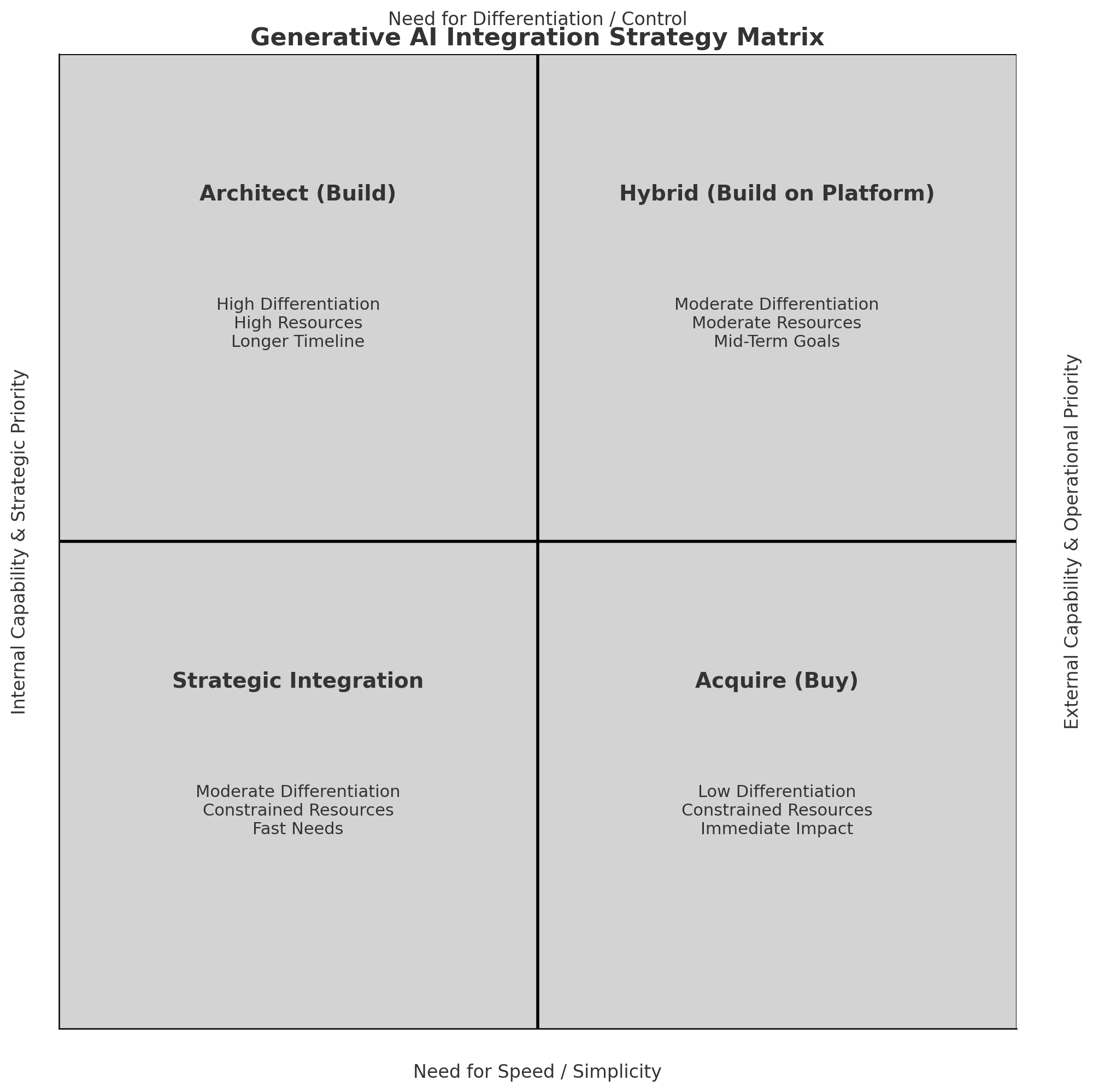Architect or Acquire? Charting Your Generative AI Integration Strategy
Generative AI is no longer a futuristic concept; it's a present-day strategic imperative. As established businesses across the Midwest and beyond look to harness its power, a fundamental question emerges: Do we architect our own AI capabilities from the ground up, or do we acquire them through off-the-shelf solutions and platform integrations? This "Build vs. Buy" dilemma is more than a technical choice—it's a core strategic decision with long-term implications for competitive positioning, operational agility, and innovation capacity.
The Allure and Challenge of Building:
The idea of crafting bespoke Gen AI solutions, perfectly tailored to unique business processes and proprietary data, is compelling. Building offers:
Maximum Customization: Solutions designed for your precise needs.
Potential for Differentiation: Creating capabilities competitors cannot easily replicate.
Full Control: Ownership of the roadmap, data governance, and intellectual property.
However, the path of the architect is demanding. It requires significant upfront investment, access to scarce and expensive AI talent, and a long-term commitment to maintenance, updates, and managing the inherent complexities of AI model lifecycles.
The Pragmatism and Pitfalls of Buying:
Acquiring Gen AI capabilities—whether through standalone software or features embedded in existing platforms like Microsoft 365 Copilot or Salesforce Einstein—offers a faster path to value. Buying provides:
Speed to Deployment: Leveraging pre-built, tested solutions.
Reduced Upfront Investment: Lower initial costs compared to ground-up development.
Vendor Expertise: Benefiting from the provider's R&D and maintenance efforts.
Yet, buying isn't without trade-offs. You inherit the vendor's roadmap, potentially face limitations in customization and extensibility, and risk accumulating "AI feature bloat"—paying for functionalities that don't align with your core needs. Furthermore, reliance on external providers necessitates careful vendor management and data governance strategies.
Navigating the Decision: Beyond the Binary
The optimal choice isn't always a stark "build" or "buy." It's a spectrum. Many businesses will find success in hybrid approaches—perhaps buying a foundational platform but building custom applications on top, or integrating niche AI tools with core enterprise systems.
The decision hinges on context. Ask yourselves:
Where does this capability fit in our value chain? Is it a core differentiator or a supporting function? Foundational models via APIs make using AI accessible, but true advantage often lies in unique application.
What are our internal capabilities? Do we possess the technical depth, data infrastructure, and financial resources to build and sustain a custom solution?
How fast do we need to move? Can we afford the development time, or is speed-to-market paramount?
What does our existing tech ecosystem look like? Can we leverage AI features being rolled out by our current software partners? How complex will integration be?
What is the long-term vision? Do we aim to become leaders in AI application within our sector, requiring deep internal expertise, or are we focused on leveraging AI for operational efficiency?
A Strategic Lens: The AI Sourcing Compass
To guide this critical decision, consider these strategic vectors:
Competitive Edge: Need for high differentiation? -> Lean BUILD. Focus on operational parity/efficiency? -> Lean BUY.
Resource Reality: Abundant talent, time, budget? -> Lean BUILD. Constrained resources? -> Lean BUY.
Solution Specificity: Highly unique requirements, proprietary data advantage? -> Lean BUILD. Standard industry use case? -> Lean BUY.
Pace & Urgency: Immediate need, market pressure? -> Lean BUY. Longer strategic timeline acceptable? -> Lean BUILD.
Control & Flexibility: Need deep control over data, IP, future roadmap? -> Lean BUILD. Vendor alignment sufficient? -> Lean BUY.
Plot your initiative based on these factors. The quadrant you land in will illuminate the most strategically sound path, whether it's building in-house, buying off-the-shelf, integrating platform features, or pursuing a hybrid model.
Ultimately, the "Build vs. Buy" decision for Gen AI is a dynamic one. The landscape is shifting rapidly. What makes sense today might need revisiting tomorrow. Partnering with strategic advisors like Evolution AI, LLC can provide the clarity and foresight needed to make informed choices, ensuring your Gen AI investments are not just technologically sound, but strategically transformative.

